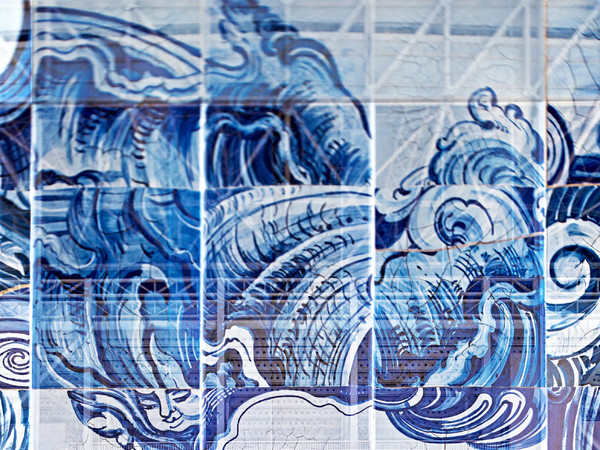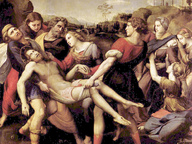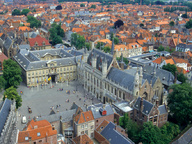Adriana Varejão. Azulejos
From 01 Ottobre 2016 to 10 Dicembre 2016
Rome
Place: Gagosian Gallery
Address: Via Francesco Crispi 16
Telefono per informazioni: +39 06 42086498
E-Mail info: roma@gagosian.com
Official site: http://www.gagosian.com
In the Baroque, beauty and the grotesque are always like opposites—it’s an aesthetic that deals with contrasts. —Adriana Varejão
Gagosian Rome is pleased to announce an exhibition of new and recent work by Adriana Varejão.
One of Brazil's most renowned living artists, Varejão is perhaps best known for her incisive reflections on the rich yet conflicted history and culture of Brazil, embodied in her azulejão or "big tile" paintings, ongoing since the first iteration in 1988. These highly inventive paintings simulate azulejos, or painted tiles whose complex provenance connects Brazil with Portugal through trade and colonization. The azulejo, a square terracotta tile, is the most widely used form of decoration in Portuguese national art, used continuously throughout Portugal’s history over a period stretching back to the Middle Ages. Traditionally, vast, luxuriously theatrical designs of azulejos were used to decorate both religious and secular buildings, homogenizing the architecture into an illusionistic pictorial whole.
The azulejo constantly renewed its vigor, reflecting the organic eclecticism of a culture that was both expansive and open to dialogue. It embraced the lessons of the Moorish artisans, inspired by the ceramics of Seville and Valencia; it later adapted the ornamental formulae of the Italian Renaissance while acknowledging the exoticism of Oriental china; following an ephemeral period of Dutch inspiration, it created fantasy story panels in blue and white that set the tone for a perfect assimilation of such varied elements. It was used in such far distant places of Portugal’s empire as Brazil. Varejão's constant invocation of the azulejo in her art functions as a metaphor for the mixing of cultures, whether by force or by desire.
Varejão's "big tiles" are, in fact, rendered on canvas in plaster and oil paint. The plaster is applied thickly to canvases laid on the ground and then left to dry. During the drying process, cracks begin to appear, as if by some natural geological phenomenon, so that every surface is unique and unrepeatable. Within the span of twenty years, these square paintings have ranged slightly in scale, sometimes aggregating into environmentally scaled works such as the operatic Celacanto provoca maremoto (Coelacanth Provokes Seaquake) (2004–08), now housed in a custom-built pavilion at Instituto Inhotim, a spectacular art park and museum in Minas Gerais, Brazil. In this work, the inscriptions of history, culture, landscape, geography and the human body that populated Varejão's earlier paintings have been subsumed into a roiling delirium of blue and white patterns and fragmentary images, rendered in a grid of paintings to simulate a tiled wall of vast proportions. The works in the current exhibition, conceived specifically with the Rome gallery in mind, are Varejão's largest single tile paintings to date, measuring 180 centimeters squared. Motifs, such as a cherub’s head, an architectural fragment, a rose, and a shell, rendered in subtle variations of blue and white according to their specific historical referents, are enlarged to the point where they begin dissolving into opulent abstract gestures.
In another ongoing theme in Varejão's work, which resonates with the many deceiving features of the Italian Baroque, a single totemic sculpture appears as a free-standing tiled architectural fragment whose cross-section reveals the shock of an interior of bloody viscera rendered in livid trompe l'oeil.
Varejão has also been invited to present Transbarroco (2014)—her only multi-channel video installation to date—at Art Club, curated by Pier Paolo Pancotto, a project within the larger cultural initiative "I giovedì della Villa – Questions d’art," at the French Academy in Rome – Villa Medici. This magnificent work, with its sweeping takes of the dizzying interiors in the Baroque churches of Minas Gerais and Bahia, Brazil and throbbing soundtrack of candomblé ritual, intercut with recitations of key writings on Brazilian identity, has never been shown outside of Brazil. The intensely hybridized baroque style that it reflects finds a contrapuntal context in the heart of Rome.
Adriana Varejão was born in 1964 in Rio de Janeiro, Brazil, where she lives and works. Major museum collections include the Metropolitan Museum of Art, New York; Solomon R. Guggenheim Museum, New York; Museum of Contemporary Art San Diego; Tate Modern, London; Fondation Cartier pour l’art contemporain, Paris; Fundación “la Caixa,” Barcelona; Stedelijk Museum, Amsterdam; and Hara Museum, Tokyo. Selected solo institutional exhibitions include “Azulejões,” Centro Cultural Banco do Brasil, Rio de Janeiro and Brasília, Brazil (2001); “Chambre d’échos / Câmara de ecos,” Fondation Cartier pour l ́art Contemporain, Paris (2005, travelled to Centro Cultural de Belém in Lisbon and DA2 in Salamanca, Spain); Hara Museum of Contemporary Art, Tokyo (2007); “Adriana Varejão – Histórias às Margens,” Museu de Arte Moderna de São Paulo, Brazil (2012, travelled to Museu de Arte Moderna do Rio de Janeiro, Brazil and Museo de Arte Latinoamericano de Buenos Aires (MALBA), Argentina in 2013); “Adriana Varejão,” The Institute of Contemporary Art, Boston (2014); and “Adriana Varejão: Kindred Spirits,” Dallas Contemporary (2015). Varejão participated in the Bienal de São Paulo (1994 and 1998); the Biennial of Sydney (2001); SITE Santa Fe (2004); Mercosul Biennial in Visual Art, Brazil (1997, 2005, and 2015); the Istanbul Biennial (2011); the Bienal de Bucareste, Romania (2008); the Liverpool Biennial (1999 and 2006); “30x Bienal,” Fundação Bienal de São Paulo (2013); and the Bienal de Arte de Contemporânea de Coimbra, Portugal (2015). In 2008, the Galeria Adriana Varejão, a permanent pavilion dedicated to Varejão's art, designed by Rodrigo Cerviño Lopez, was inaugurated at Inhotim Centro de Arte Contemporânea, Brumadinho, Minas Gerais, Brazil. In 2016 she was commissioned to produce a temporary mural to cover the entire facade of the Centro Aquatico for the Summer Olympics in Rio de Janeiro.
Varejão's video installation Transbarroco will be on view at the French Academy of Rome – Villa Medici from Thursday, September 29–October 2. The weekly program "I giovedì della Villa – Questions d’art" is an initiative of the Villa Medici to reflect on the state of contemporary creativity—visual arts, cinema, music, theater, literature, and art history—through the interaction between different audiences and languages in various forms including lectures, concerts, performances, exhibitions, and installations. Created by Louis XIV in 1666, The French Academy in Rome is a French public institution with three statutory missions: support of professional artists and research fellows through residencies; active cultural and artistic exchange; and the conservation and appreciation of the Villa Medici.
Opening Saturday October 1 h 6-8pm
SCARICA IL COMUNICATO IN PDF
COMMENTI

-
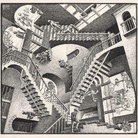 Dal 16 novembre 2024 al 11 maggio 2025
Asti | Palazzo Mazzetti
Dal 16 novembre 2024 al 11 maggio 2025
Asti | Palazzo Mazzetti
-
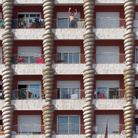 Dal 16 novembre 2024 al 08 dicembre 2024
Venezia | Arsenale Nord
Dal 16 novembre 2024 al 08 dicembre 2024
Venezia | Arsenale Nord
-
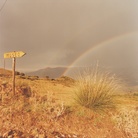 Dal 16 novembre 2024 al 09 febbraio 2025
Milano | Museo Diocesano Carlo Maria Martini
Dal 16 novembre 2024 al 09 febbraio 2025
Milano | Museo Diocesano Carlo Maria Martini
-
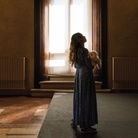 Dal 16 novembre 2024 al 16 dicembre 2024
Bologna | Collezioni Comunali d'Arte Palazzo d'Accursio
Dal 16 novembre 2024 al 16 dicembre 2024
Bologna | Collezioni Comunali d'Arte Palazzo d'Accursio
-
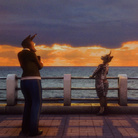 Dal 31 ottobre 2024 al 24 febbraio 2025
Milano | Fondazione Prada
Dal 31 ottobre 2024 al 24 febbraio 2025
Milano | Fondazione Prada
-
 Dal 31 ottobre 2024 al 02 febbraio 2025
Arezzo | Galleria d’Arte Contemporanea / Sala Sant’Ignazio
Dal 31 ottobre 2024 al 02 febbraio 2025
Arezzo | Galleria d’Arte Contemporanea / Sala Sant’Ignazio
